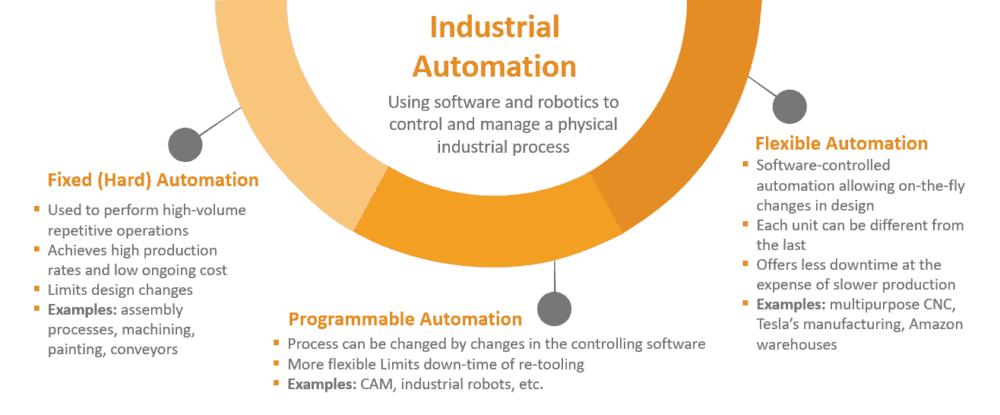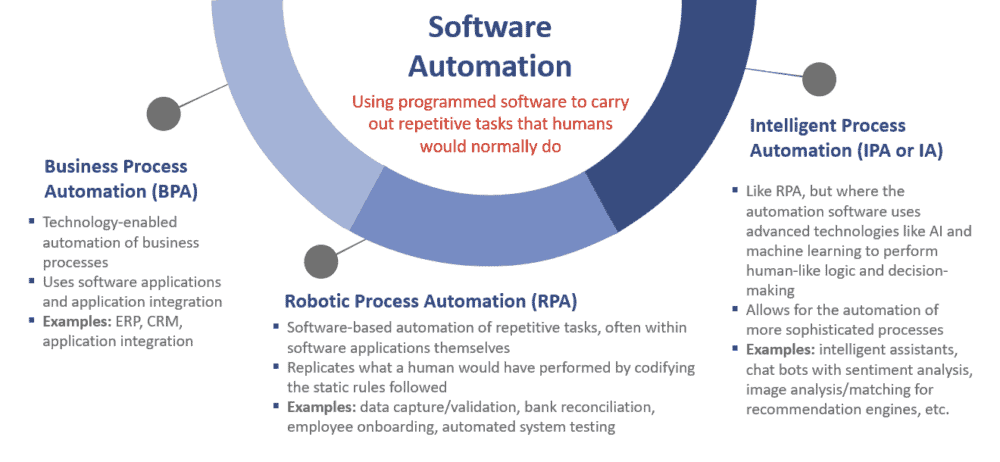The Advantages of Automation in Business
To simply say “automation is a buzz-worthy term in 2023” would be quite an understatement. Today, the topic of automation is cycling through mainstream media on various platforms, often raising more questions than answers. In this article, we’ll break down the advantages of automation in business, and address the various points of view encompassing the topic.
What is Automation?
If you tune into any popular news network, or engulf yourself in an IT-based internet rabbit hole, you’ve no doubt come across the topic of automation. Automation by definition is the technique and action of making a process or system operate automatically, with little to no human interaction.
When perceived through the lens of the average worker (despite the industry he or she may abide in), it’s natural for something like automation to raise timidity, or at least some questions:
It’s questions like these that find their way into some of the most popular public broadcasts, like the 2019 Democratic Debate for example. In one of the most recent debates, the topic of “automation threatening U.S. jobs” was brought up for each of the candidates to address. In fact, this talking point specifically has been a staple in many of the recent debates, as many industries are adopting automaton to streamline their existing processes. While the feedback given by each candidate on this topic is irrelevant for this article (although you can explore their responses here), the question raised various points of view all the same.
The 2019 Edelman Trust Barometer found automation to be the biggest fear among U.S workers
Advantages of Automation in Business
With all this buzz circling through these popular platforms, it can be easy to get lost in the noise, thus limiting ones understanding of automation in general. However, especially in the world of business, it is absolutely crucial to understand the difference between software automation and industrial automation, and the positive impact this new technology can have on the people, processes and technology supporting organizations in various industries.

Industrial Automation
When most people hear the term “automation”, they picture giant robotic arms assembling a vehicle on an assembly line, or something of that nature. While this is not the definition of automation as a whole, it is a better depiction of industrial automation. Industrial automation is defined as the use of control systems (like computers or robots) that handle certain processes and machineries in place of a human. In practical terms, industrial automation generally does in fact replace humans, which is why this is the popular scare factor among workers today.
However, even this way of thinking may be a bit misguided, especially when popular public figures refer to automation in general as a “new wave” of technology. In 1913 (over 100 years ago), Henry Ford introduced the first robotic assembly line to streamline the creation of motorized transportation vehicles. This assembly line was of course not as advanced as it is today. However, the fact remains that industrial automation in general is certainly nothing new. In fact, the emergence of industrial automation (even in the early 1900’s) has opened a new era of value in the intellectual property of workers. Further, the mitigation of human error due to industrial automation not only significantly optimized production, but also protected the employment of laborers for a much longer period.
Because of industrial automation, human workers were now able to do the following (these still apply today):

Software Automation
One of the main advantages of automation in business is software automation. Unlike industrial automation, software automation is in fact a new technological phenomenon, and in reality is a more accurate depiction of the form of automation currently impacting businesses today. Software automation is a digital-based tool that serves to manage step-by-step processes through the use of software bots. For example, one of the most popular forms of software automation in business today is Robotic Process Automation, or RPA for short. Altogether, there are various intelligent digital applications that exists as forms of software automation.
Like industrial automation, software automation can “take over” human processes. However, the roles in the workplace hierarchy pertaining to software automation can become very skewed. The primary focus of software automation is to assign step-by-step/mundane tasking to digital bots, freeing up the human workforce to focus on tasks that require deeper intellectual thought. In other words, software automation handles the grunt work, while humans spend their time on processes that require out-of-the-box thinking.
Software automation has incredible advantageous qualities for the human workforce, which include:
The impact on minimum wage jobs
Software automation has especially impacted the class of minimum wage workers, which one can argue encompasses the majority of those more fearful of automation. Automation in general has slowly made the minimum wage worker obsolete. However, it’s because of this that more minimum wage employees are developing into higher-skilled jobs through education and more efficient on the job training.
Our KitchIntel application is a prime example of the working unison of automation and back-of-house workers in the restaurant industry (an industry heavily impacted by automation). Through applying intelligent digital management to the more hectic side of the restaurant, minimum wage workers are able to train faster, set themselves up for success, and gain more time to focus on customer service and front of house operations.
The Impact of the Automation Wave
The automation wave is here and fluctuating through the business realm. However, machines (and certainly software bots), will not replace us by way of automation. A recent article originally published by Gartner predicted that in 2019, the number of attended bots will increase to a 50:50 ratio. Meaning, for every bot operating in a system, there will likely be a human working alongside of it managing that particular process. This is especially true in terms of software automation, which as we’ve covered, is indeed the “newest wave” of automation impacting business today.
Automation is far from making humans “extinct” from the workforce. Rather, it’s giving human workers the opportunity to truly be the best they can be – freeing them from the hourly shackles of step-by-step processes and giving them avenues to truly innovate, and prosper new ideas. In business, this innovative mindset is not only important, but in this day and age, it’s becoming a requirement to succeed.
Looking for more on Automation?
Explore more insights and expertise at smartbridge.com/automation
Keep Reading: Automation 101 – Getting Started With Automation
There’s more to explore at Smartbridge.com!
Sign up to be notified when we publish articles, news, videos and more!
Other ways to
follow us:





